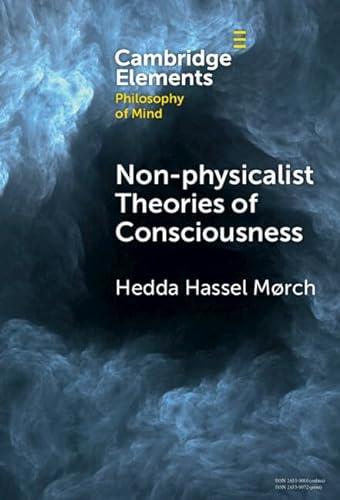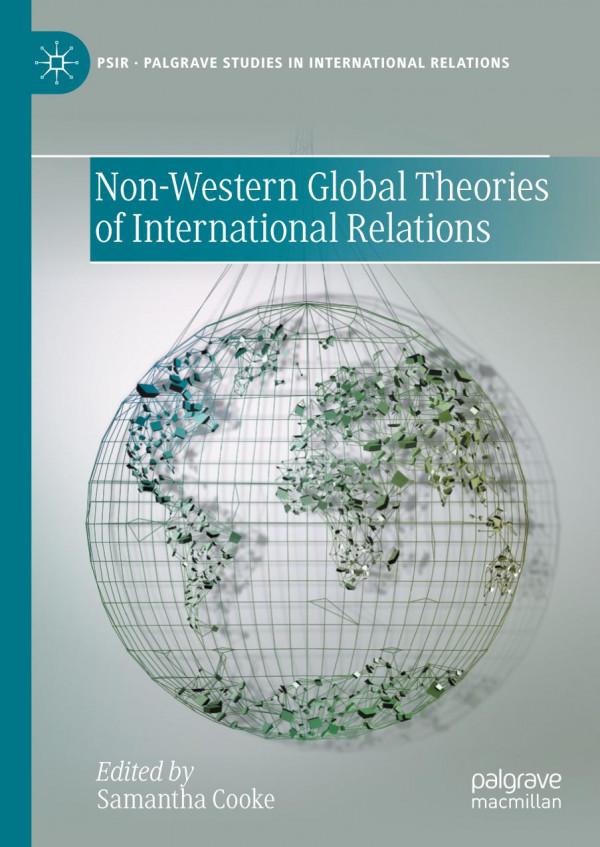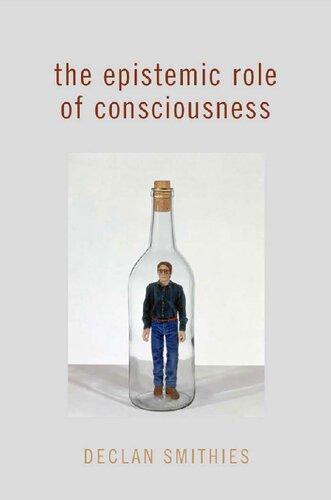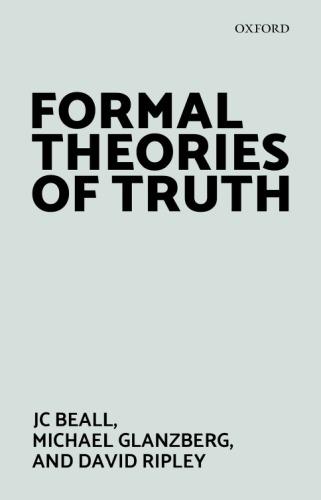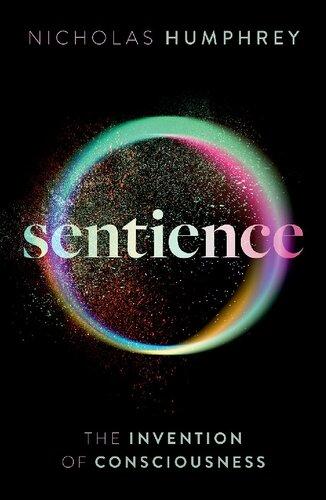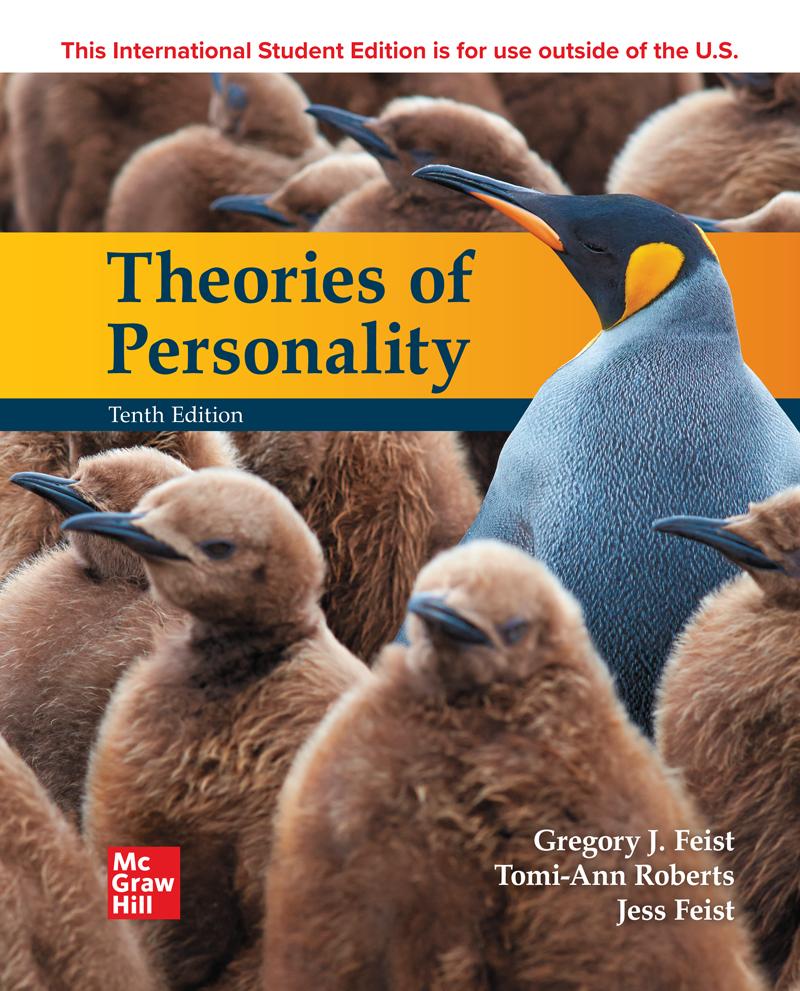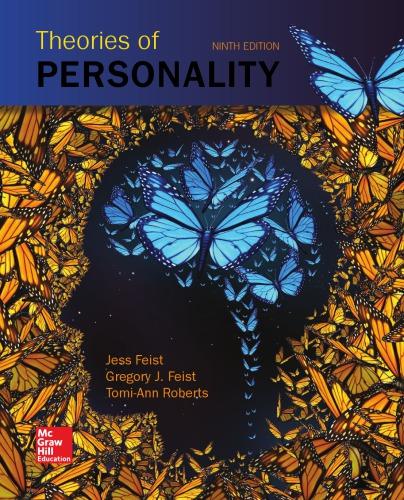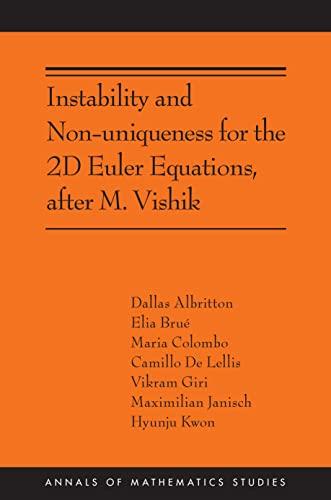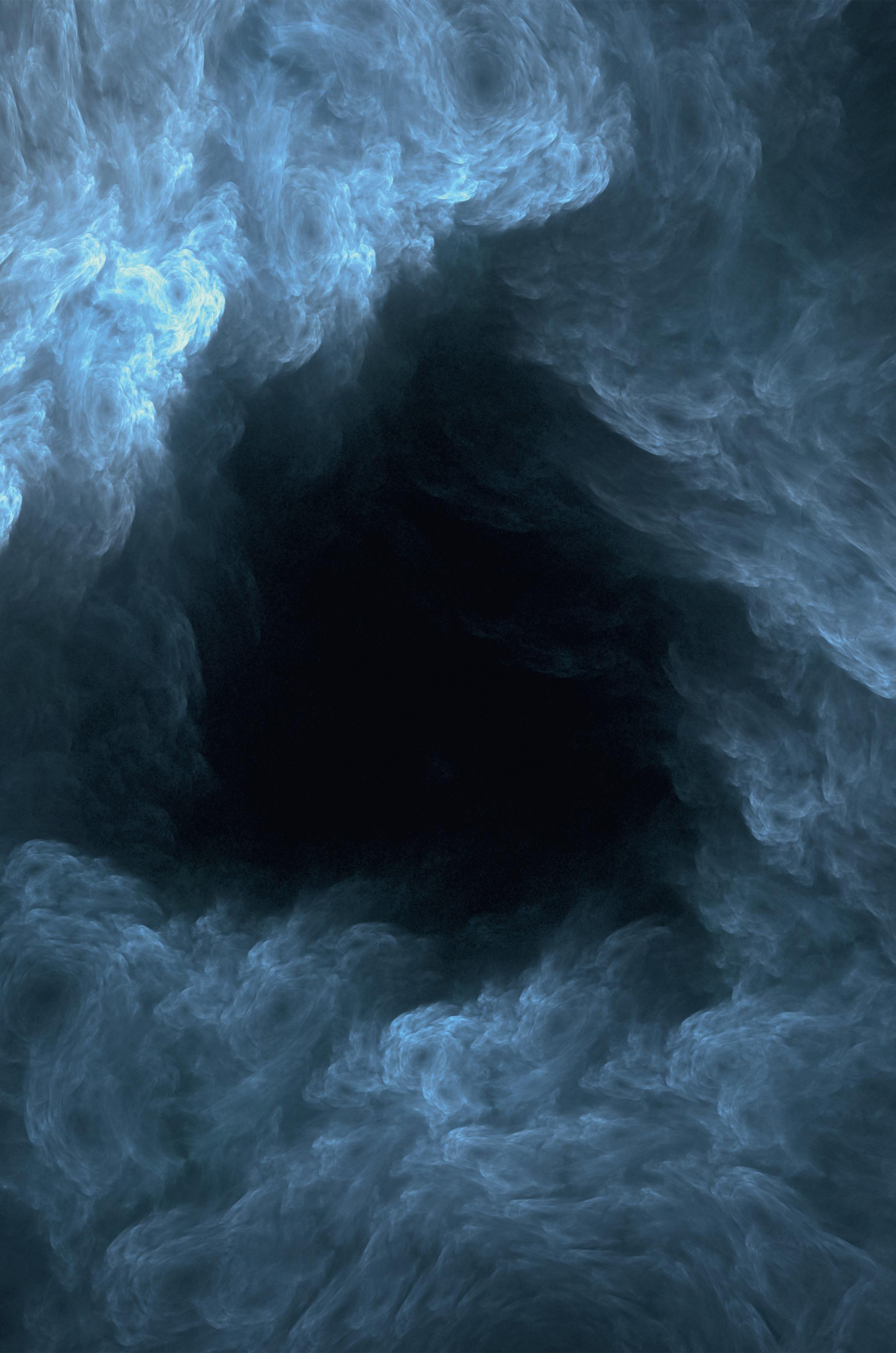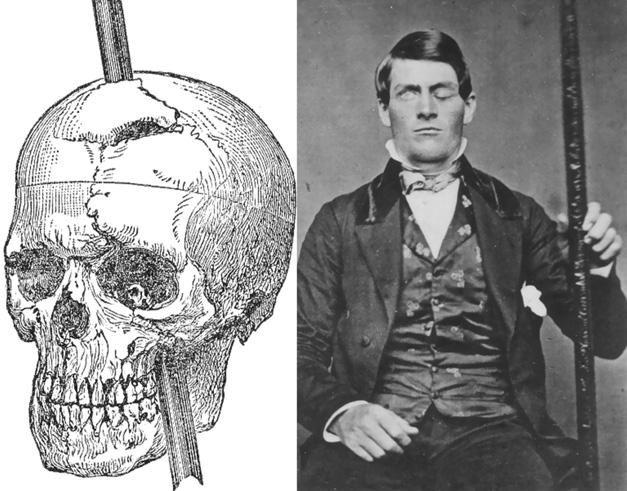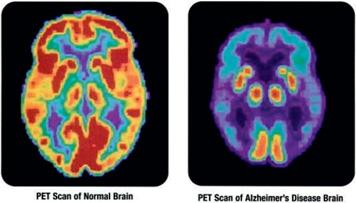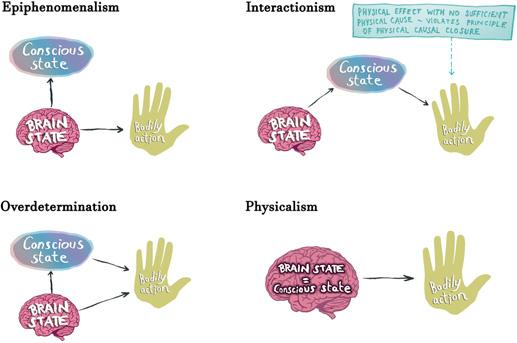1ConsciousnessandPhysicalism
1.1Consciousness
Theterm “consciousness” canbeunderstoodindifferentways.Forexample, consciousnesscanbeunderstoodastheabilitytothinkandreason,theabilityto registerandprocessinformationaboutone’senvironmentandoneself,orakind ofgeneralreflectiveawareness.Thesedefinitionsarealltiedtovariousfunctionsorabilitiesdistinctiveofhumansorsomebroaderclassofanimals. Consciousnessinthesenseofanymerefunctionsorabilitiescanbereferred toas functional consciousness.
Thereisalsoanothersenseofconsciousness,knownas phenomenal consciousness.Phenomenallyconsciousstatesarecharacterizedbythefactthat thereis somethingthatit’slike foracreatureorentitytobeinthem,orthatthey aresubjectivelyexperiencedorfelt.Thinkofexperiencessuchasseeingred, feelingpain,tastingchocolate,feelinglove,orthinkingathought.These experiencesmaybeassociatedwithvariousfunctionsorabilities,suchas perceptionorreflection,buttheyalsoseemtohaveasubjectivequalityor feelingtothemthatgoesbeyondthat.Thatistheirphenomenalaspect.2
Itisphenomenalconsciousnessthatismainlyatissueinthedebatebetween physicalismandnon-physicalism – aswewillsee,functionalconsciousness givescomparablylittlereasontodoubtwhetherrealityispurelyphysical.Letus lookmorecloselyatsomeofthemostimportantfeaturesofphenomenal consciousness.
Thedefinitionofconsciousnessintermsoftherebeing somethingthatit’slike isdueto Nagel(1974),andhasbeenwidelyadoptedinphilosophy.3 AsNagel notes,tosaythatconsciousnessis like somethingisnottosaythatitmerely resembles something(ifso,everythingwouldtriviallybeconscious,because everythingresemblessomethingelseinsomewayorother).Theimportant point,accordingtoNagel,isratherthatthereissomethingthatit’sliketobein consciousstates for theconsciousentityitself.Thatis,consciousnessis subjective inthesensethatit’spresentonlyforitssubjectorfromaparticularpoint ofview.Physicalobjects,incontrast,are objective ,inthesensethattheycanbe presentfrommultiplepointsofvieworindependentlyofanypointofviewat all – forexample,differentpeoplecansee,feel,orotherwiseperceivethesame
2 Theterm “phenomenal” relatesto “phenomena” inthesenseofwhatimmediately appear tous,as opposedtotherealitybehindtheappearances.Consciousstatescanberegardedasphenomenain thissensebecausetheyarewhatimmediatelyappeartous,andthatthroughwhichtherestof realityappears(i.e.,viaconsciousperception).
3 Thephrasewasusedto describe consciousnesslongbeforeNagel,butheseemstohavebeenthe firstto define itinthoseterms(Stoljar2016).
chairfromdifferentpointsofview,andweusuallythinkthatthechaircanexist withoutanyoneperceivingorhavingapointofviewonitatall.
Theclaimthatconsciousnessissubjective,inthissense,isclosetoanother commonclaim,namelythatconsciousnessis private.Tosaythatone’sconsciousstatesareprivatedoesnotmeanthatnobodyelsecanknowanything aboutthem;itrathermeansthatnobodyelsecanknowaboutthem inthesame directway.Thatis,myownconsciousstatesappeardirectlytome,whereasthe consciousstatesofotherpeopleweinferorperceiveindirectlythroughtheir behavior,verbalreports,facialexpressions,andsoon.
Becauseofthisdirectaccess,manyphilosophersalsoholdthatourown consciousnesscanbeknownwithabsolute certainty.RenéDescartesfamously claimedthatwehaveindubitableknowledgeofourownconsciousness,and therebyourownexistence(“cogitoergosum”).Others,includingnonphysicalists4 suchasChalmers,holdthatourownconsciousnessisknown withahighdegreeofcertainty,butwithoutbeingabsolutelycertain (Chalmers2019b).
Thefactthatweseemtohavenodirectaccesstotheconsciousnessofothers, ontheotherhand,givesriseto theproblemofotherminds – howdoyouknow thatothersareconsciousatall?Inresponsetothisproblem,somemaydrawthe conclusionof solipsism,theviewthatnobodyisconsciousexceptoneself.5 However,it’sperfectlycoherenttoholdthatwehaveprivileged,directaccessto ourownconsciousness,butcanalsobemorethanreasonablysurethatother peopleareconsciousbasedonindirectaccessbywayofbehavioral,verbal,and othercues.
Inadditiontotheirsubjectivity,consciousstatesarecharacterizedbyparticular qualities,oftenreferredtoas qualia orphenomenalqualities.Phenomenal qualitiesrelate,invariousways,tophysicalqualitiesintheexternalworld.For example,thephysicalrednessofanapplemightcauseyoutoexperience phenomenalredness(andtherebyperceivethattheappleisred).Butyou couldalsoexperiencephenomenalrednessinadreamorhallucination,with nophysicallyredobjectsaround.Conversely,thephysicalrednessoftheapple doesnotdisappearwhennobodyislookingatitandnoexperiencesofphenomenalrednessoccur(exceptaccordingtosomeversionsofsubjectiveidealism, discussedin Section3).Furthermore,sciencehasrevealedthatphysicalqualitiessuchascolorsconsistinpropertiessuchasreflectinglightwaveswithin
4 Amongphysicalists,it’smorecommontodoubttheabsolutecertaintyofconsciousness,giventhe problemitposesforphysicalism.
5 Morespecifically,thiscanbereferredtoas phenomenal solipsism,whereassolipsismingeneral canbeunderstoodastheviewthatnothingexists(i.e.,neitherconsciousnornon-conscious beings)exceptoneself.
acertainspectrumandabsorbingothers,6 andthesepropertiesbearlittle resemblancetothephenomenalqualitiestheycauseustoexperience(indeed, someholdthatphysicalpropertieshavebeenrevealedasnotreallyqualitativeat all,butratherpurely structural – moreonthisin Section4).Phenomenal qualitiestherebyseemquitedistinctfromphysicalqualitiesorproperties.
Goingbacktothedefinitionofphenomenalconsciousnessastherebeing somethingthatit’slikeforthesubject,wesaidthatthe “for thesubject” part pointstothesubjectiveaspectofconsciousness.Butinaddition,the “something thatit’slike” partcanbeunderstoodaspointingto,notjustthetrivialfactthat consciousnessresemblessomething,butratheritsqualitativeaspect,thatis,that consciousnessis qualitatively likesomething.7
Phenomenalconsciousnessisalsocharacterizedbyadistinctivekindof unity (BayneandChalmers2003).Atanygiventime,youmayhavemultiple experienceswithdifferentphenomenalqualities:differentcolors,sounds, thoughts,emotions,andsoonallatonce.Yet,thesequalitiesareallunifiedor subsumedunderasinglepointofview.Onemightthinkthisunityresultsfrom thefactthatallthequalitiesareexperiencedbythesamesubject,wherethe subjectisunderstoodasanentity,thing,orcontainerdistinctfromtheexperiencesit’shaving.Alternatively,onemightthinktheunityresultsfromthe qualitiesorindividualexperiencesmergingtogethertoformasingletotal experience,therebyformingconnectionsdirectlyamongthemselvesrather thanviaadistinctsubject.ThisisroughlyinaccordancewithDavidHume’s claimthattheselfisjusta “bundleofperceptions” asopposedtoanentity distinctfromthem.Itcanbereferredtoas thedeflationaryview ofthesubject (sinceit “deflates” itfromathinginitsownrighttoastructureofexperiences relatedinacertainway).
Afurtherimportantpropertyofconsciousnessis intentionality.Intentionality isthewaythoughts,intentions,andothermentalstatescanbe about thingsor statesintheworld,or directed or aimed towardsthem.Forexample,mythought that “catssleepalot” is about actualcats,inawayitseemsnon-mentalstates cannotbe,atleastnotnon-derivatively.Forexample,thephrase “catssleep alot” asprintedonthispageisastringofphysicalsymbolsthatisalsoabout
6 Atleastthisisacommonconception.Sometheoriesofcolor,suchasnaïverealism,holdthat physicalcolorsaremoreliketheyintuitivelyseemthanhowsciencetendstodescribethem,and morecloselyrelatedtophenomenalqualities(see Maund2018 foranoverviewofthisandother theoriesofcolor),thoughtheywouldstilldiffer,e.g.,inexistingevenwhenunperceived.
7 See,e.g.,Chalmers,whoexplicatesthat “amentalstateisconsciousifthereissomethingitislike tobeinthatmentalstate.Toputitanotherway,wecansaythatamentalstateisconsciousifithas aqualitativefeel – anassociatedqualityofexperience” (1996,p.4).Here,Chalmersexplicates “somethingthatitislike”-nessintermsofqualitativenessalone,andhealsoleavesthe “forthe subject” partoutofthedefinition(manyotherphilosopherstendtodothesame).
actualcats,butonthefaceofit,thisisonlybecauseoneormoreconscious beingshavedecidedthatthesesymbolsshouldrepresentthem,andtheir intentionalitytherebyseemsderivativeoftheintentionalityofconsciousness (Searle1983).FranzBrentanofamouslydeclaredintentionality “themarkofthe mental,” thatis,itsdefiningfeature.Today,however,philosopherstendto regardphenomenality,or “whatit’slike”-ness,asanequally,ifnotmore, importantmark.8
1.2Physicalism
Physicalismcanbedefinedastheviewthateverything,includingconsciousness,is identicalto or constitutedby physicalstatesorprocesses(orphysical facts,eventsorothercategoriesonemayprefer),thatis,statesorprocesses whosepropertiesareallphysical.9 Tosaythatconsciousnessisconstitutedby thephysicalcanberegardedascompatiblewithsayingconsciousnessis realized by, reducible toor grounded inthephysical,whichareotherways physicalismhasbeendefined(i.e.,constitutioncanberegardedasencompassingtheseotherrelations).Whattheserelationshaveincommonisthattheyall implythatconsciousnessissomehow nothingoverandabove thephysical. Notethatidentitycantechnicallyberegardedasatypeofconstitution(insofar aseverythingconstitutesitself),andphysicalismcouldthereforebedefined evenmoresimplyintermsofconstitutionalone.
Therearetwomaintypesofphysicalism:identitytheoryandfunctionalism.10 Theidentitytheorytakesconsciousstatestobeconstitutedbyspecificphysical statesorprocesses(Place1956; Smart1959; Searle1992).Forexample,the feelingofpainmaybeconstitutedbyc-fibers firing,11 seeingredbysomeneural
8 Thatis,somewoulddenythatphenomenalityisa defining featureofthementalbecausethere maybeunconscious(andhencenon-phenomenal)mentalstates,butitisstillwidelyregardedas (among)itsmost important featureinthesenseof,e.g.,themostinterestingormysterious.One mightalsoholdthatunconsciousmentalstatesmustbeatleast potentially conscious,andhence potentiallyphenomenal.
9 Onemightnarrowthedefinitionbyaddingthateverythingin concrete realityisphysicalor physicallyconstituted,becausesomephilosophersholdthatabstractobjectssuchasnumbers andsetsreallyexistinanabstractsense,andphysicalismcanberegardedascompatiblewith non-physicalabstractobjects.Alternatively,onemightjustfocusonphysicalismaboutconsciousnessspecifically,i.e.,theviewthatconsciousness(butnotnecessarilyrealityasawhole)is physicalorphysicallyconstituted,whichisalsocompatiblewithabstractobjects(orother objectsorpropertiesunrelatedtoconsciousness)beingnon-physical.
10 Foramoredetailedintroductiontothevarioustypesofphysicalism,seePeteMandik’sElement PhysicalistTheoriesofConsciousness.
11 NotethatthisandmostotherexamplesinthisElementofphysicalstatesthatcouldberegarded asthebasisorcorrelatesofvariousconsciousstatesshouldberegardedashypotheticalpossible candidatesratherthanplausibleactualcandidates.C-fibers firing,inparticular,actuallyseems likeaprecursorofpainratherthanthecorrelateofpainitself,butithasneverthelessbecome astandardexampleinphilosophyofahypotheticalpaincorrelate.
activityinthevisualcortex,orthefeelingoflovebyneuralactivityinsome otherpartofthebraininvolvingserotoninandoxytocin.
Functionalismtakesconsciousstatestobefunctionalstates,thatis,states definedmerelyintermsoftheircausesandeffects(onbehavior,internalstates, orotherfunctionalstates),thatare realized (i.e.,implementedorperformed)by physicalstatesorprocesses(Putnam1967; Armstrong1981)(asnoted,realizationcaninturnberegardedasaformofconstitution).Forexample,paincould beunderstood(veryroughly)assomethinglike “thekindofstatethatmakes creaturesawareofpossiblebodilydamageandinturntrytoavoidit.” In humans,thisfunctionmayberealizedby,forexample,c-fibers firing,butin insects(iftheyfeelpain)itwouldberealizedbysomeotherorganicprocess, whereasinconsciousrobots(whichwouldbepossible,accordingtofunctionalism,ifrobotscouldreplicateourfunctions)itwouldberealizedbysome syntheticprocessormechanism.
Manyfunctionaliststakethefunctionsofconsciousnesstoinvolvecomputationalstates,ordispositionstoprocessinformationinthesamesensecomputers do.Giventhiskindoffunctionalism,consciousnesscouldberegardedasakind ofsoftwarewiththebrainashardware – orrather one typeofhardwareamong others.Identitytheorists,incontrast,wouldidentifyconsciousnesswiththe hardwareofthebrainitself.12
Physicaliststherebydifferinexactlywhatkindofphysicalstateorprocess theytakeconsciousnesstobe.Butwhatdoesitmeanforastateorprocess(or property,fact,orsimilar)tobephysicalinthe firstplace?Ononedefinition,to bephysicalisthesameastobe material,ormadeofmatter.Butaccordingto physics,manythingsarenotmaterialinthesenseofhaving,forexample,mass, solidityorextension,whicharepropertiestraditionallyregardedasessentialto matter.13 Forexample,manyparticleshavenomass,andcanbeunderstoodas extensionlesspoints.
Anotherdefinitionthereforeleavesthespecificnatureofthephysicalupto thescienceofphysics,bydefiningphysicalpropertiessimplyaswhatever propertiesaredescribedbyphysics(Smart1978; Braddon-Mitchelland Jackson1996; Melnyk2003).Sincephysicsdescribespropertiesbeyondmass andextension,thingscanbephysicalwithouthavingtheseproperties,butrather invirtueofhavingotherpropertiesdescribedbyphysicssuchasenergyorbeing associatedwitha field.
12 Oralternatively,withfunctionsthatarerealizedbyaspecifictypeofhardware,asidentity theoristsmaytakeconsciousnesstobepartiallyconstitutedbyfunctionsandpartiallyconstituted byspecificrealizers.
13 Forthisreason,theterm “materialism” haslargelybeenreplacedby “physicalism,” thoughthe formerisstillinuse.
However, current physicsiscertainlyincompleteandevenfalseinsome respects(weknowthis,amongotherreasons,becausequantummechanicsand therelativitytheory,thetwomajorcomponentsofcurrentphysics,aremutually inconsistent).Therefore,itseemsphysicalpropertiesshouldbeunderstoodas thekindsofpropertiesdescribedbyfuture, completed or ideal physics.
Butthisleadstoanotherobjection,namelythatwehavenoideawhat completedphysicswilllooklike.Ifwedon’tputsomefurtherrestrictionson whatitcouldlooklike,thenanythingcouldinprinciplecountasphysical.For example,whatifcompletedphysicsendeduppositingimmortalsouls,thatare completelydistinctfrombrainprocesses,asequallyfundamentalasquarksand electrons?Orifconsciousnessinanyformturnedouttobefundamental?Tosay thatsomethingis fundamental istosaythatit’snotconstitutedbyanythingelse, butisratherabasicbuildingblockofreality.Itseemsthatconsciousnessbeing fundamentalshouldberegardedasincompatiblewithphysicalism – rather,it’s typicallyregardedasadefiningfeatureofmost(thoughnotall)kindsofnonphysicalism.
Thisproblem – thatphysicalismiseitherfalse,ifthephysicalisdefinedin termsofcurrentphysics,ortrivialorempty(byrulingnothingout,including theorieswewouldtypicallyregardasnon-physicalist),ifit’sdefinedintermsof future,completedphysics – was firstraisedby Hempel(1969) andishence knownasHempel’sdilemma.
Toresolvethedilemma,onecouldaddtothedefinitionthatphysicalpropertiesshouldbedescribedbyacompletedphysicsthatisalso continuous with currentphysics.Sincefundamentalimmortalsouls,andfundamentalconsciousnessingeneral,aresharplydiscontinuouswithanythingpositedbycurrent physics,theywouldnotcountasphysical(thus,ifcompletedphysicsincluded this,physicalismwouldberefuted).
Anotheroption(defendedby,e.g., MonteroandPapineau2005; Stoljar2010) istodefinethephysicalnegatively,orintermsofwhatitisnot.Specifically,it hasbeenproposedthatphysicalpropertiesshouldbedefinedaspropertiesthat arenotfundamentallymentalorconsciousness-involving.Neithershouldthey befundamentallydivineorhaveotherfeaturesthatclearlyseemnon-physical, suchasprotomentalfeatures(aspositedbysomeformsofdual-aspectmonism, discussedin Section4).Thisnegativedefinitioncanalsobecombinedwiththe physics-baseddefinition,bysayingthatthephysicalshould both bedescribed bycompletedphysics and fulfillthenegativecriterion(Chalmers1996; Wilson 2006).
Inwhatfollows,wewillunderstandtheterms “physical” and “physicalism” roughlyintermsofacombinationofthesedefinitions.Physicalismshouldthusbe understoodastheviewthatthefundamentalconstituentsofrealitycanbefully
describedbycompletedphysicsofasortroughlycontinuouswithcurrentphysics andthatdoesnottakeconsciousness,protoconsciousnessandsimilaras fundamental.14
Correspondingly,non-physicalismaboutconsciousnesswillbe understoodastheviewthatthefundamentalconstituentsofrealityare not fully describablebycompleted,continuousphysicsbecauseconsciousnessiseither fundamentalorconstitutedbysomethingdiscontinuouswithcurrentphysicsand/ orruledoutbythenegativecriterion,suchasfundamentalprotoconsciousness.
1.3ArgumentsforPhysicalism
Untilfairlyrecently(the1950s–60saretypicallyregardedastheturningpoint, thoughthe1860shavealsobeenidentifiedasimportant[Papineau2001,p.5; Stoljar2010,pp.1–2]),non-physicalismwasthepredominantviewofconsciousness – mostphilosophersseemedtobeidealistsordualists.
Inlargepart,thiswasbecauseconsciousnessjustseemsdifferentfromany physicalproperties.Aswehavealreadysaid,phenomenalconsciousnessis subjectivewhereasthephysicalisobjective,andconsciousnessischaracterized byphenomenalqualitieswhichseemquitedifferentfromphysicalqualitiesor properties.Thefunctionsandabilitiesassociatedwithconsciousnessarealso verydifferentfromthoseofnon-consciousbeings – theyinvolvepurposeful behavior,intelligence,language,andsoon – anditusedtobehardtoseehow thesefunctionscouldbeperformedbymerephysicalmatter.15
Physicalismstartedtodominateonlyinviewofanumberofdevelopmentsof modernscience,whichformthebasisforthreeimportantarguments:the argumentfrommind–braincorrelations,theargumentfromphysicalcausal closure,andtheargumentfrompreviousexplanatorysuccessesofscience.
1.3.1TheArgumentfromMind–BrainCorrelations
Sciencehasgraduallyrevealedastrongdependencebetweenthemindandthe brain.AstrikingearlyindicationofthiswasthecaseofPhineasGage(1823–60), arailroadworkerwhosufferedanaccidentinwhichametalrodwaspierced throughhisbrain(see Figure1),yethemiraculouslysurvived.Buttheaccident ledtoaradicalchangeinhispersonality:before,hewasdescribedasbalanced
14 Thephysicalandphysicalismmayalsobedefinedinabroadersense(Stoljar2001; Strawson 2006b; Chalmers2013),accordingtowhichphysicalpropertiesmayalsoincludeproperties beyondthereachofphysics(suchastheintrinsicpropertiesdiscussedin Section4).Butthis definitionwouldincludeviewssuchasdual-aspectmonismandpropertydualism,thatare typicallyregardedasnon-physicalistanddon’tcorrespondtohowthetermismosttypically used,anditwillthereforenotbeusedhere.
15 See,e.g.,Descartes’ DiscourseonMethod (PartV),whereheclaimsthatnophysicalmechanism couldexplainlanguageandintelligentbehavior.
(Source: WikimediaCommons)
andwell-liked,butafterwardsas “gross,profane,coarse,andvulgar” and “no longerGage” (Macmillan2000).Ifsomeone’spersonalitycanfundamentally changebasedonbraininjuryalone,itindicatesastrongdependenceofthemind onthebrain.
Sincethen,neurosciencehasofferedmoreandmoreevidenceforsuch dependence.Wehavediscoveredhowconsciousnesscanbeaffectedbyall kindsofphysicaleventsandinterventionsincludingnotonlysevereinjuries suchasGage’s,butalsobraintumors,syndromes(suchasAlzheimer ’s), surgery(e.g.,lobotomyorcallosectomy),electromagneticstimulation(from electroshocktherapytotransmagneticstimulation),anddrugs(fromanesthetics toLSDandantidepressants).Andwiththehelpofbrainscanningtechniques suchasPETandfMRI(see Figure2)wehavediscovereddetailedcorrelations betweenspecificconsciousstatesandbrainstates(e.g.,seeingredmaycorrelate withspecificactivityinthevisualcortex,anxietywithanoveractiveamygdala, andsoon).
Allthiscanbetakentosupportatypeofcorrelationknownas supervenience betweenmindandbrain.IfAsupervenesonB,therecanbenochangein AwithoutachangeinB.Thus,ifconsciousnesssupervenesonthebrain,there canbenochangeinconsciousnesswithoutacorrespondingbrainchange(there can,however,beabrainchangewithoutchangeinconsciousness,becausenot everythinginthebrainmakesadifferencetoconsciousness).
Figure1 PhineasGage
Whatexplainsthissupervenience?Physicalists(e.g., Smart1959; Hill1991; BlockandStalnaker1999; McLaughlin2001; Melnyk2003)havearguedthat thebestexplanationisthatconsciousstatesareconstitutedbythebrainstates theysuperveneon.Themostnaturalalternativeisadualistexplanation,accordingtowhichnon-physicalconsciousnessisconnectedtothebrainbymeansof fundamentallawsofnature.Thephysicalistexplanationissimplerandmore elegantthanthedualistexplanationinthatitdoesn’trequirepositingextralaws ofnature,andallowsustoregardmindandbrainasonethingratherthantwo. Othernon-physicalistexplanations,suchasidealistanddual-aspectmonist explanations,wouldalsohavetoberegardedasunnecessarilycomplicatedor otherwiseimplausible(thoughproponentsofthisargumenttendtonotexplicitlyfocusonthesealternatives).
1.3.2TheArgumentfromPhysicalCausalClosure
Theargumentfrommind– braincorrelationsfocusesonhowthephysical brainaffectsconsciousness.Theargumentfromphysicalcausalclosure (Kim1989 ; Papineau2001 ; Melnyk2003; MonteroandPapineau2016) focusesonhowconsciousnessaffectsthebrainandbody,orthephysical worldingeneral.
Wetakeforgrantedthatourconsciousstateshavecausaleffectsonthebrain andbody.IfIfeelpainfrommyarmbeinginanawkwardposition,thatwill causemetomoveit.IfIenjoythetasteofanapple,thatwillmakemetake anotherbite.IfIhaveanintentiontogoforawalk,thatwillcausemetodoit. Andsoon.
Yet,ifconsciousnessisnon-physical,it’shardtoseehowthisispossible,in viewofthe principleofphysicalcausalclosure.Accordingtothisprinciple,
Figure2 BrainimagesobtainedbyPETscans
everyphysicaleffect,i.e.,eventthathasacause,hasacompletephysicalcause. Thatis,somephysicalevents,suchasquantumevents,maybetrulyrandomand withoutacause,butthosephysicaleventsthat do haveacause – andthisseems toincludeallhumanbehavior16 – haveacompleteexplanationintermsof physicalcauses.
Considerthecaseofsomeonemovingtheirarmawayfromapainful position.Thiswouldhaveacompletephysicalexplanationintermsofthe nervesintheirarmbeingstimulatedbythewaythearmispositioned,which causeselectricalsignalstobesentthroughtheirnervoussystemuptothe brain,whereittriggersthereleaseofvariousneurotransmittersbetween neurons,culminatinginanewelectricalsignalbeingsentbackthroughthe nervoussystemdowntothearm,wheretheelectricitycausestheirmusclesto contractinsuchawaythatthearmmoves.Wecanthusexplain(atleastvery roughly,inthecaseofthisexample)howbehaviorisproducedwithoutthe mentionofanyconsciousstates,suchasthefeelingofpainortheintentionto movethearm.
Furthermore,thesignalingbetweentheneuronscanberegardedasimplementingakindofcomputation,withtheneurons firingornot firingcorrespondingroughlytotransistorsinacomputerturningonandoffandthusrepresenting 1’sand0’s.Thiscanphysicallyexplain(alsoveryroughly)howourbehavior canarise intelligently,orinawayinfluencedbyandcoherentwithinformation receivedfromperception,memoryandsoon.
Asmentionedearlier,beforemodernscience,thefunctionsandabilitiesof consciousbeings,suchasintelligenc eandpurposefulbehavior,lookeddifficulttoexplaininphysicalterms,andthiswasonereasonmanyregarded consciousnessasnon-physical.Ifallourfunctionsandbehaviorshave acompletephysicalexplanationafterall,astheprincipleofphysicalcausal closureclaims,thisreasontoholdthatconsciousnessisnon-physicalis undermined.Butonemightstillthinkconsciousnessisnon-physicalfor otherreasons(suchasitjustseemingdifferentfromthephysical).The argument fromphysicalcausalclosure,however,combinestheprinciple withtwofurtherpremisesinordertoruleoutnon-physicalconsciousness altogether.
Theprincipleofphysicalcausalclosure,byitself,rulesout interactionist dualism,theviewthatconsciousstatesarenon-physicalandcausephysical effectsdifferentfromthosethatwouldresultfromphysicalcausesalone.But giventheprinciple,non-physicalconsciousnesscouldstillberegardedashaving
16 Acontraryview,thathumanbehaviorisratheraresultofquantumrandomness,willbediscussed in Section2.
nophysicaleffectsatall,asper epiphenomenalism.Onthisview,non-physical consciousnessisproducedoraffectedbyphysicalbrainstates,butcausesno physicaleffectsinreturn.Anotherpossibilityisthatourbehaviorhasmental causes inaddition totheirsufficientphysicalcauses.Thatis,ourbehaviormight be overdetermined bymorethanonecause,bothaphysicalbrainstate(thatwould havebeensufficienttocausethebehavioronitsown)andnon-physicalconscious state(thatisneverthelesspresenttoalsocausetheexactsamebehavior).
Theargumentthereforeaddsthatbothepiphenomenalismandoverdeterminationareunacceptable,andthattheonlywaytoavoidthem,iftheprincipleof physicalcausalclosureiscorrect,istoassumethatconsciousstatesarephysical. Ifso,theycouldcausephysicalbehavior,inanon-overdeterminingway,in virtueofbeingconstitutedbyphysicalbrainstatesthatweknowcausebehavior. Thus,physicalismofferstheonlyplausiblewayofsecuring mentalcausation, i.e.,thatmentalstatescausephysicaleffects,givenphysicalcausalclosure.
Tosumuptheargument:
1. Physicalcausalclosure: Everyphysicaleffect(i.e.,eventthathasacause) hasasufficientphysicalcause.
2. Non-epiphenomenalism: Consciousstateshavephysicaleffects(i.e., behavior).
3. Non-overdetermination: Thephysicaleffectsofconsciousstates(i.e., behavior)donothavemorethanonesufficientcause.
Therefore,
4. Physicalism:Consciousstatesarephysical.
Anotherwayofunderstandingtheargumentisasclaimingthattherearefour possiblepositionsonemaytakeonmentalcausation,interactionism(which impliesviolationofphysicalcausalclosure),epiphenomenalism,overdetermination,andphysicalism,amongwhichphysicalismisthemostplausibleoption. Thepositionscanbeillustratedasin Figure3.
Whyshouldwebelieveinthepremisesofthisargument,orthatphysicalismis indeedthemostplausibleoption?Epiphenomenalismandoverdetermination seemquiteimplausibletomostpeople,amongotherthingsbecauseitjust seemsobviousthatconsciousnesscausesbehavior,anditwouldseemlike astrangecoincidencethatconsciousnessshouldalwayscausetheexactsame effectsasthebrainstatestheyarecorrelatedwith(theseandotherarguments againstepiphenomenalismandoverdeterminationwillbediscussedinmore detailin Section2).
Theprincipleofphysicalcausalclosurecanbesupportedbyscientific evidence.Manyhaveseenitassupportedbythelawofconservationofenergy
(see Montero2006,p.384),becauseitmayseemthatifanythingnon-physical affectsthephysicalworld,itwouldaddenergytoit,thusviolatingconservation. However,onemightthinknon-physicalcausescanonlytransferenergytothe physicalthatitpreviouslyreceivedfromit.Ifso,non-physicalcauseswouldbe compatiblewithconservationofenergy(Papineau2001; Montero2006).Onthe otherhand,thescientificevidencecouldbeinterpretedassupportingnotonly thatenergyingeneralisconserved,butthat physical energyis(Koksvik2007). Thisismoreofathreattonon-physicalcauses.Butit’sdebatablewhetherthe evidenceshouldbeinterpretedinthisstrongerway.
Amoredefinitiveargumentderivesfromphysiology,neuroscience,andother sciencesofthehumanbodyinparticular(Papineau2001).Thesescienceshave revealednosignofnon-physicalforcesoperatinginthebrainandbody,whichare theplacesinfluencefromnon-physicalconsciousnesswouldbeexpectedtoshow up.Onthecontrary,theystronglyindicatethateveryphysicaleventinthebrain andbodycanbecompletelyexplainedinphysicalterms.Forexample,asoutlined earlier,wecanexplainwhysomeonemovesawayfromapainfulpositioninterms ofpurelyphysicalmechanisms.Ofcourse,wedon’tyethavecompletephysical explanationsofallphysicalbehavior,becausewehaven’tyetbeenabletomap outeveryphysicaldetailinthebrainandbody,soitcan’tbedefinitivelyruledout thatsignsofnon-physicalinfluencewilleventuallyshowup.Butfromthefact thateveryphysicaleventinthebrainandbodyexamined sofar hasseemed completelyphysicallyexplicable,andourresearchhasreachedanadvanced stage,wecanconcludethatmostlikelytheyallare.
Figure3 Positionsonmentalcausation
1.3.3TheArgumentfromPreviousExplanatorySuccesses
Theargumentfrompreviousexplanatorysuccessespointstohowmostother oncemysteriousphenomenahaveonebyonebeenexplainedinphysicalterms. Forexample,beforethescientificrevolution,starsandplanetswereregardedas consistingofadifferenttypeofmatterthanthingsonEarth(sincecelestial bodiesmovedincircleswhereasthingsonEarthmoveddownwardinstraight lines),anddiseaseswereexplainedintermsofevilspiritsordivinepunishment. Andevenlongafterthescientificrevolution,lifewasexplainedintermsofnonphysical,vitalforces(élanvital).Butallthesephenomenawereeventually explainedinphysicaltermsbymeansofNewtonianphysics,Pasteur ’sgerm theory,17 andDarwin’stheoryofevolutioncombinedwithFrancisandCrick’s discoveryofDNA.Inaddition,asalsonotedbytheargumentsforphysical causalclosurediscussedpreviously,manyofthemajorfunctionsassociated withconsciousness(suchasinformationprocessingandproductionofintelligentbehavior)havealreadybeenphysicallyexplained,atleasttoalargeextent.
Accordingtophysicalists(e.g., Smart1959; Melnyk2003),wecanconclude fromthisthatconsciousnessitself(oritsphenomenalornon-functionalaspects) willeventuallybephysicallyexplained,too.Thereasonwhyconsciousnessis solatetobefullyphysicallyexplainedmaybethatthebrainisjustfarmore complexthananyotherknownphysicalphenomena.
Notethatthisargumentisdifferentfromtheargumentfromphysiologyin supportoftheprincipleofphysicalcausalclosure,accordingtowhichallphysical eventsdiscoveredinthebrainandbodysofarseemtohaveaphysicalexplanation,thereforeweshouldexpectallphysicalevents(includingsofarunexaminedornotfullyexplainedevents)tohaveaphysicalexplanation.Theargument fromphysiologyconcludesthatall physicalevents (includingthoseweusually taketobeexplainedbyconsciousness)haveaphysicalexplanation,whereasthe argumentfrompreviousexplanatorysuccessesconcludesthat consciousness itself hasaphysicalexplanation.
1.4ArgumentsagainstPhysicalism
Inviewofthesethreearguments,physicalismhasbecomethedefaultviewwithin philosophyandscience.Themainreasonwhyithasneverthelessnotcompletely takenover18 isasetofthreeargumentsagainstit:theknowledgeargument,the
17 Diseaseswerealsoexplainedbythehumortheory,whichcouldberegardedasphysicalistic,but unlikethegermtheorythisturnedoutfalse(andthusonlythegermtheorycanberegardedas definitivelysupplantingthenon-physicalexplanations).
18 Atleastifspeakingofphysicalismaboutconsciousness – ifspeakingofnon-physicalismin general,argumentsbasedon,e.g.,theexistenceofanon-physicalGodorabstractobjects(see footnote9),mightbeatleastasimportant.
conceivabilityargumentandtheexplanatoryargument.Theseargumentsmainly concernphenomenalconsciousness.Inaddition,thereareargumentsbasedon intentionalityandunity,thoughtheycanberegardedasatleastsomewhatless powerful.
1.4.1TheKnowledgeArgument
Theknowledgeargumentclaimsthatknowledgeofconsciousnesscan ’tbe deducedfromanyphysicalknowledge;therefore,consciousnessisnotphysical.Themostdiscussedversionsofthisargumentaredueto Nagel(1974) and Jackson(1982) 19
Nagelarguesthatifbatsarephenomenallyconscious(asseemsplausiblethat theyare),theywouldhaveexperiencesverydifferentfromours,becausethey haveaverydifferentsensorysystembasedonecholocatingsonars(i.e.,they generatehigh-pitchedsoundsandregisterhowtheyareechoedbacktothem). Butnomatterhowmuchwelearnaboutthephysicalcharacteristicsofthebat’s sensorysystem,brain,andsoon,wecan’tdeduce whatit’slike tobethebat. Phenomenalfactsmustthereforebedifferentfromphysicalfacts(atleast, accordingtoNagel,onanytypicalunderstandingofthephysical,corresponding roughlytothephysics-baseddefinitiondiscussedin Section1.2).
Apossibleobjectiontothisargumentisthatsincehumanbrainsarenot configuredtohavesonarexperiences,it’snotconfiguredtoimaginethemeither. So,theargumentonlydemonstratesalimittoourimagination,notalimitto whatisinprinciplededucible.Jackson’sversionoftheargumentavoidsthis objection,becauseitappealstoakindofexperiencemosthumansarecapableof having,namelytheexperienceofseeingred.
Jackson’sversionoftheargumentisbasedonathoughtexperimentabout abrilliantscientistcalledMary,whogrowsupinaroomwhereeverythingis blackandwhiteandhasthereforeneverseenanycolors.Butintheroom,shehas gainedcompleteknowledgeofeveryphysicalfactaboutcolorsandcolorsvision fromblackandwhitebooks.Onedaysheisletouttheroomandseesaredrosefor the firsttime.Sheexclaims: “Wow!Sothisiswhatit’sliketoseered.” Inother words,Marylearnsanew,phenomenalfact.Butsinceshealreadyknewallthe physicalfactsaboutredandothercolors,thismustbeanon-physicalfact.
1.4.2TheConceivabilityArgument
Theconceivabilityargumentclaimsthatit’sconceivablethatconsciousness comesapartfromthephysical;therefore,it’salsopossiblethattheycomeapart
19 NotethatJacksonlaterrecantedtheargumentandendorsedphysicalism,buthiscriticismhas convincedfarfewerthantheoriginalargumentitself.
andconsciousnessisnotphysical.Theconceivabilityargumentgoesbackto Descartes(Meditations,VI; DiscourseonMethod,IV),whoarguedthatwecan conceiveofconsciousnessexistingwithoutthebody,oranyphysicalworldat all(asthephysicalworldcouldconceivablybeanillusioncreatedbyanevil demon),andthatwecanthereforeseethatconsciousnessisdistinctfromthe physical.Thisversionoftheargumentcanbereferredtoas theargumentfrom disembodiment.
Modernversionsoftheconceivabilityargumentfocusonhowthephysical worldisalsoconceivablewithoutconsciousness.20 Oneofthemostdiscussed versionsofthiskindofargumentisChalmers’ zombieargument (1996, 2009) (seealso Kirk1974 and Kripke1980 forimportantprecursors).Zombiesare definedasbeingswhoareidenticaltousineveryphysicalrespect,includingboth theirexternalbehaviorandtheirinternalcompositionandstructure – theyhave theexactsamebrainstates.Buttheylackphenomenalconsciousness – thereis nothingthatit’sliketobethem.Chalmersarguesthat(1)zombiesareperfectly conceivable,(2)ifzombiesareconceivable,thentheyare metaphysicallypossible,and(3)ifzombiesaremetaphysicallypossiblethenphysicalismisfalse. Metaphysicalpossibilityisroughlyequaltologicalorconceptualpossibility –thatis,tonotinvolvinganycontradictioninterms,astheconceptsof “married bachelor” or “squarecircle” do – orpossibilityinprinciple.21 Itshouldnotbe confusedwith nomologicalpossibility,whichispossibilitygiventheactuallaws ofnature.Clearly,conceivabilitydoesnotimplynomologicalpossibility,aswe canconceiveofanumberofthingsthatarenotpossiblegiventheactuallawsof nature,suchaspeoplelevitating,fasterthanlighttravel,andsoon.Butconceivabilitymayplausiblyberegardedasaguidetometaphysicalpossibility.
Moreprecisely,thezombieargumenttakesconceivabilitytoimplymetaphysicalpossibility,andcorrespondingly,inconceivabilitytoimplymetaphysicalimpossibility,onlyunderce rtainconditions.Roughly,thelink holdsonlywhenweareconceivingofthethingsinvolvedintermsoftheir
20 Themainreasonforthisisthattheconceivabilityofconsciousnesswithoutthephysicaldoesn’t clearlyrefutefunctionalism,asfunctionalistsmaygrantit’spossibleforconsciousnesstobe realizedbyanon-physicalsystem,eventhoughit’sactuallyphysicallyrealized.Whatfunctionalistscannotgrant,however,isthatit’spossibleforthephysicalrealizerofaconscioussystemto existwithoutconsciousness,asthezombieargumentclaims.Butthedisembodimentargument mightstillhavesomeadvantages,andversionsofithavebeendefendedby,e.g., Kripke(1980), Gertler(2007), Goff(2010),and Swinburne(2013).
21 Possibilityinprinciple(andhencemetaphysicallypossibilityunderstoodaccordingtothis description)couldbeunderstoodasmorerestrictivethanlogicalorconceptualpossibility: e.g.,thingslike “anobjectwithinfiniteparts,”“thenumber2notexisting,” or “acolorbrighter thanyellowbutnotwhite” couldberegardedasimpossibleinprinciple(andhencemetaphysicallyimpossible)butstilllogicallyorconceptuallypossible.Themostimportantthing,however, isthatmetaphysicalpossibilityismuchbroaderthannomologicalpossibility.
realnature ( Nida-Rümelin2006 ; Goff2017 ),asopposedtointermsofhow theysuper fi ciallyappear,orintermsofothercontingent(i.e.,inessentialor coincidental)orimprecisecharacteristics. 22
Forexample,forsomeonewhoconceivesofatrianglesuperficiallyorvery imprecisely(becausetheyhavenotstudiedgeometry),itcouldbeconceivablethat itsanglesdon’tsumto180degrees,eventhoughthisismetaphysicallyimpossible (assumingEuclidianspace).Butforsomeonewhoknowsandunderstandsallthe characteristicsoftrianglesandthinksaboutthemintermsoftheirrealnature,it shouldbeinconceivablethattheiranglesdon’tsumto180degrees,anditcouldbe concludedfromthisthatthisisalsometaphysicallyimpossible.Whenitcomesto consciousness,wealsoseemtoknowits realnature,asitsnatureconsistsin what it’slike forusandthisweseemtohavedirectaccessto.Therefore,(in)conceivabilityshouldbeaguideto(im)possibilityforconsciousnessinthesamewaythatitis forgeometricalobjects,forexample(forsufficientlyqualifiedgeometricians).
Inordertomakethe finalstepfromthemetaphysicalpossibilityofzombiesto thefalsityofphysicalism,theargumentalsopresupposesthatiftwothingsAand BareidenticalorAisconstitutedbyB,thenit’smetaphysicallyimpossiblefor BtoexistwithoutA(asinfluentiallynotedby Kripke(1980) forthecaseof identity,andthecaseofconstitutioniscloselyrelated).Forexample,ifthestatue Davidisconstitutedbyapieceofmarbleinacertainshape,it’smetaphysically impossible(i.e.,impossibleregardlessofwhatthelawsofnaturemaybe)forthat pieceofmarbletoexistinthatshapewithoutthestatueDavidalsoexisting.23 In thesameway,ifconsciousnessisconstitutedbyaphysicalstate – asphysicalism claims – itshouldbemetaphysicallyimpossibleforthatphysicalstatetoexist withoutconsciousness.But,accordingtothezombieargument,thisisperfectly conceivableandhencemetaphysicallypossible,meaningthatphysicalismisfalse.
1.4.3TheExplanatoryArgument
Theexplanatoryargumentclaimsthatconsciousnesscan’tbeexplainedin physicalterms;therefore,consciousnessisnotphysical.Thiskindofargument goesbacktoGottfriedWilhelmLeibniz(Monadology,paragraph17),whoasks
22 Thisisroughlyequivalenttosayingthatthelinkholdswhenthingsareconsideredunder conceptsthatare “completeandadequate” (Descartesasquotedin Gertler2007), comprehensive (Gertler2007), transparent (Goff2011, 2017),orwhoseprimaryandsecondaryintensions coincide(Chalmers2009).
23 ItwouldalsobepossibleforthestatueDavidtobeconstitutedbymorethanthepieceofmarble, e.g.,bybeingmadebyacertainartist,andifsothepieceofmarblewouldnotalonemetaphysicallynecessitateDavid,buthereweassumeitisconstitutedsolelybythemarble.It’salsopossible forDavidtobemultiplyrealizable,i.e.,thatitcouldhavebeenmadeby,e.g.,adifferentpieceof marble,orbybronze.Butexistenceofanyoneofthesepossiblerealizersstillmetaphysically necessitatestheexistenceofDavid.
ustoimagineaconscioussystem(i.e.,onethat “thinks,feelsandhasperception”)largeenoughforustowalkintoandinspect(asthoughitwereamill –hencetheargumentisknownasLeibniz’ mill).Leibnizclaimsthatnomatter howmuchwelearnedaboutthesystemanditsparts,wecouldnever find anythingto “explainaperception.”
Onemightthinkmodernneurosciencehasimproveduponthissituation. However,asChalmershasargued(1995, 1996)(seealso Levine1983 and Strawson1994 forsimilarconsiderations),modernneuroscienceandother relevantsciencesstillaren’tabletofullyexplainconsciousness,atleastnot bymeansofanyoftheirstandardmethods.
ThestandardmethodsofneurosciencearesufficienttosolvewhatChalmers calls theeasyproblems ofconsciousness.Theeasyproblemsconsistinexplainingthefunctionsassociatedwithconsciousness(suchastheabilitytoregister andprocessinformationabouttheenvironment,generatingintelligentbehavior, andsoon).Toexplainafunction,allonehastodoisidentifyamechanismable toperformorimplementthefunction.Andneurosciencehasidentifiedphysical mechanismsbehindanumberofimportantfunctionsofconsciousness(suchas theproductionofbehaviorandthecapacitytoprocessinformation,asalready outlinedabove),anditseemsplausiblethatallthefunctionsofconsciousness caneventuallybefullyexplainedinthesameway.
ButneurosciencehasnomethodforsolvingwhatChalmerscalls thehard problem ofconsciousness.Thehardproblemconsistsinexplainingwhyphenomenalconsciousnessaccompaniesanyofthesefunctions,orhowphenomenalconsciousnessarisesfromanyphysicalprocessesatall(i.e.,whyaren’twe allzombies,inthesenseoftheconceivabilityargument)?Whenitcomesto phenomenalconsciousness,itseemsneurosciencecandiscover correlations betweenphenomenalstatesandconsciousstates – forexample,thatthefeeling ofdepressioniscorrelatedwithlowserotonin,orseeingredwithsomeactivity inthevisualcortex.Itmightalsoidentifywhatallthephysicalcorrelatesofany consciousstatehaveincommon – forexample,thattheyarecharacterizedby highamountsofintegratedinformation,aspertheIntegratedInformation Theory,orthattheyareconnectedtoaglobalneuronalworkspace,asperthe GlobalWorkspaceTheory,whicharetwoleadinggeneraltheoriesofconsciousnessincurrentneuroscience(theformerwillbediscussedmoredetailin Section4).Butneurosciencecannotexplainwhythesecorrelationshold:why couldn’twehave,forexample,lowserotoninbutnofeelingofdepression(but rather,sayafeelingofhappinessoranexperienceofred),orhighintegrated informationbutnoconsciousnessatall?
AccordingtoChalmers,thereisaprincipledreasonwhyneuroscienceis limitedto findingmerecorrelationsratherthanfullexplanations,namelythatits
standardmethodsconsistin finding reductive explanations,thatis,explanations ofphenomenaintermsoftheunderlyingphysicalpartsorprocessesthatmake themup.Buttheonlyphenomenathatcanbereductivelyexplainedare functionsorstructures:functionscanbereductivelyexplainedby findingphysical mechanismsthatperformthem(aswhensolvingtheeasyproblems),and structurescanbereductivelyexplainedbyidentifyingthepartsthatcompose themandtherelationsbetweenthem(e.g.,acrystal,whichcanbeunderstoodas astructure,canbeexplainedbyidentifyingthemoleculesthatcomposeitand thechemicalbondsthatholdbetweenthem).Phenomenalconsciousness,in contrast,isnotamerefunctionorstructure:itmay have functionsandstructure (e.g.,avisualexperiencemayhavethefunctionofinformingusaboutthe environment,andthestructureofcontainingadistributionofdifferentcolors), butthereismoretoitthanthis(namely, whatit’slike).Therefore,itcanneverbe reductivelyexplained.Thisargument,whichcanberegardedasasub-argument oftheexplanatoryargument,isknownas thestructureandfunctionargument.
Atthispoint,physicalistsmightinvoketheargumentfrommind–brain correlations,accordingtowhichthecorrelationsbetweenconsciousstatesand brainstatescanbeexplainedbysimplyassumingthatconsciousstatesare constitutedbytheircorrelatedphysicalstates.Butaccordingtotheexplanatory argument,onecannotsimplyassumethatconsciousstatesareconstitutedby physicalstates,itmustbe shown thattheyare.Toofferareductiveexplanation isjusttoshowhowconsciousnessisphysicallyconstituted,andthisiswhatthe explanatoryargumentclaimsisimpossible.
Physicalistsmayalsoinvoketheargumentfrompreviousexplanatorysuccessesofscience,accordingtowhichotherphenomenathatonceseemed impossibletophysicallyexplaineventuallywere.Chalmersrespondstothis argumentthatallphenomenathathavepreviouslybeenreductivelyexplained havebeenfunctionalorstructuralphenomena.Forexample,diseasescanbe defined(roughly)bythefunctionofmakingpeoplesick,andlifehasbeen scientificallydefinedasasetoffunctionsincludingmetabolism,growth, homeostasis,reproduction,andsoon.Theycantherebybereductively explainedbyappealtomechanismssuchasgerms(fordiseases),orgenesand DNA(forlife).Thatanumberoffunctionalorstructuralphenomenahavebeen physicallyexplainedgivesusnoreasontoexpectthatanon-functionaland non-structural,andthusentirelydifferent,phenomenonsuchasphenomenal consciousnesscanbephys icallyexplainedaswell.
Notethattheexplanatoryargumentonlyclaimsthatphenomenalconsciousnesscan’tbe reductively explained,orexplainedin physical terms.Phenomenal consciousnesscouldstillbeexplained non-reductively,orin non-physical terms,butthiswouldresultinanon-physicalisttheory.
1.4.4TheEpistemicGap –
andPhysicalistResponses
Theknowledge,conceivability,andexplanatoryargumenthavesomething importantincommon.Theyeachpointoutadisconnectbetweenour knowledge or concepts ofphenomenalconsciousnessandourknowledgeorconceptsofthe physical,andconcludefromthisthatphenomenalconsciousness itself isnot physical.As Chalmers(2003) sumsitup,theyeachpointoutan epistemicgap –agapwithinwhatwecanknoworconceive(“epistemic” meansregarding knowledge) – andconcludefromthisthatthereisan ontologicalgap – agapin realityorbetweenwhat is (“ontological” meansregardingwhatthereisorwhat realityfundamentallyconsistsof).Theargumentscouldthereforebejointly referredtoas theargumentsfromtheepistemicgap.
Physicalistshaveofferednumerousandvariedresponsestothesearguments (foranoverviewofthemainstrategies,see Chalmers2003).Ingeneral,however, physicalistsmayseemprimarilymotivated,notbyspecificerrorsperceivedinthe arguments against physicalism(infact,somephysicalistsadmitto findingthem fairlycompelling),butratherbyhowthearguments for physicalismseemso strong.Theargumentfromphysicalcausalclosure,especially,carriesmuch weight(aswesaw,theexplanatoryargumentagainstphysicalismmaycast somedoubtonboththeargumentfrommind–braincorrelationsandtheargument fromprevioussuccesses).Manyphilosophers finditfarmoreplausiblethatthere is some errorintheargumentsagainstphysicalism – evenifwecan’tbesure exactlywhattheerroris – thanthatphenomenalconsciousnessisepiphenomenal, anoverdeterminer,orviolatesphysicalcausalclosure,aswouldfollowfrom rejectingphysicalismaccordingtothisargument.
Non-physicaliststhereforeneedtoanswerthearguments for physicalism,the argumentfromphysicalcausalclosureinparticular,inadditiontoofferingargumentsagainstit.Fromthe nextsection onward,wewillseehoweachofthemain non-physicalisttheoriesdothis.But first,letusconsidersomefurtherarguments againstphysicalismbasedonconsciousness’ featuresofintentionalityandunity.
1.4.5ArgumentsBasedonIntentionality
Intentionality(recall,thewayconsciousstatescanbe about thingsintheworld) canalsobeconsideredaproblemforphysicalism.Oneofthemostinfluential argumentstothiseffectisbasedon therule-followingproblem firstraisedby LudwigWittgenstein.Accordingtothisproblem,whenweconsiderany sequenceofitems,suchas “1,3,5,7 ..., ” itwillalwaysbecompatiblewith anumberofdifferentrules,suchas “add2” (ifso,thenextitemwillbe9)or “add2threetimes,thensubtract2threetimes” (ifso,thenextitemwillbe5)or “add2threetimes,thenrepeatthesamenumberforever” (ifso,thenextitem
willbe7).Thatis,wecanneverinferwhichruleisbeingfollowedfromthe outputoftherulealone.
Inthesameway,itdoesnotseempossibletoinferthemeaningofanintentional state,suchasathought,oranexpressionofit,suchasaword,fromstudyingits physicalmanifestationsalone. Quine(1960) arguesthatwecan’ttellfromsomeone’sbehaviorofuttering “rabbit” onlyinthepresenceofrabbitsthatthisword referstorabbitsratherthan,forexample,undetachedrabbitparts,whichwill alwaysbepresentatthesametime. Kripke(1982) arguesthatnophysicalfacts determinewhethersomeoneapparentlyperformingadditionisnotactuallyperforming quaddition,which,justlikeaddition,outputsthesumwhenappliedto numbersupto57(orsomeotherarbitrarynumber),butwhenappliedtohigher numbersalwaysoutputs5,orrelatedly,whetherbytheword “plus” theymeanplus (inthesenseofaddition)or quus (inthesenseof quaddition).
Onemightsumthisupbysayingthatthereisan epistemicgap fromphysical factstointentionalfactsaboutmeaning,inthatthelattercan’tbededucedfromor explainedbyphysicalfacts.Some,includingQuineandKripke,concludefrom thisthattherearenodeterminatefactsaboutmeaning(suchasaboutwhetherby theword “plus” wemeanplusor quus) – becausetheydon’tthinkanymental factscoulddeterminemeaningeither.Butothersholdthatthereclearlyarefacts aboutmeaning,andifphysicalfactsdon’tdetermine(orleaveanepistemicgap to)them,factsaboutmeaningmustberegardedasnon-physical.24
Atypicalresponsetothisproblemistoarguethatalthoughmeaningisn’t physicallydeterminedinanysimpleorobviousway,itcouldbephysically determinedinmoresubtleorcomplexways.Forexample,anumberofattempts havebeenmadeat naturalizing intentionality – whereby “naturalizing” ismeant roughlythesameasaccountingforinphysicalterms – intermsofthephysical abilitiesofconsciousbeingstotrackobjectsorfeaturesintheirenvironment (Millikan1984; Dretske1988; Fodor1990),thatmanyregardaspromising.
Inviewofthis,somenon-physicalistsacceptthatintentionalitycanbephysicallyexplained,butstilldenythatphenomenalitycan(e.g., Kim2005).25 One reasontotreatintentionalitydifferentlyinthisrespectisthat,aswehaveseen, phenomenalityappearsnon-functionalandnon-structuralandarguablyonly functionalandstructuralphenomenacanbephysicallyexplained.Butintentionalitycouldberegardedaspurelystructural,becauseitmayseemtoconsistmainly
24 E.g., Ross(1992) and Goff(2012).Someproponentsofthephenomenalintentionalitytheories, tobediscussedshortly(e.g., Strawson2008a),havealsoimplicitlyendorsedthisargumentby takingintentionalitytobegroundedinphenomenalityandphenomenalitytobenon-physical,but theyoftentreattheseissuesseparatelyandthereforedon’texplicitlypresentthewholeargument. 25 Kimiswidelyknownasaphysicalist,butinhis 2005,he(somewhatreluctantly)acceptsakind ofpropertydualism.
inaspecialtypeofrelation(the “aboutness” relation)betweenconsciousnessand thingsintheworld.Hence,thereislessofaprincipledobstacletophysically explainingit.
Othernon-physicalistsholdthatwhileintentionalitycannotbefully explainedinphysicaltermsitcanstillbefullyexplainedinphenomenal terms,oralternatively,inacombinationofphenomenalandphysicalterms,as perwhatisknownas phenomenalintentionality theories(HorganandTienson 2002; Strawson2008a; Kriegel2013; MendeloviciandBourget2014). Accordingtosuchtheories, whatit’slike tobeagivenperson – andthismay includedistinctivelyintentionalorcognitivephenomenalqualities,suchas feelingsofintention,will,understanding,andsoon – fullydeterminestheir intentionalstates,or(onsomeversions)determinesthemtogetherwithphysical factsaboutvariousrelationstotheenvironment.
Ifintentionalityisconstitutedeitherbythephysicalalone(asperattemptsat naturalizingintentionality),thephenomenalaloneoracombinationofthe phenomenalandphysical(asperphenomenalintentionalitytheories),itposes nodistinctproblemforphysicalism.Forittoposeadistinctproblem,intentionalitymustitselfappearfundamental,orconstitutedbyneitherthephysicalnor thephenomenal,andthisviewislessoftendefended.
1.4.6ArgumentsBasedonUnity
Thewayconsciousnessseemsdistinctivelyunifiedhasalsogivenrisetoargumentsagainstphysicalism.Descartesmadeanargumentofthissort (Meditations,VI),accordingtowhichthemindisindivisible,whereasall physicalbodiesaredivisible;therefore,themindisnon-physical.
Morerecentargumentsclaim,somewhatsimilarly,thattheunityofconsciousnessmustbeaccountedforbya subject distinctfromtheexperiencesit’s having,andsubjectsaresimpleandunified,butnothingphysicalissimpleand unifiedinthesameway(oratleastnocomplexphysicalsystems – fundamental particlesmaybesimpleandunified,buttheargumenttendstoassumethat subjectsofexperiencecouldn’tbeconstitutedbysingleparticles).Therefore, subjectsarenotphysical(thisorsimilarargumentshavebeendefendedby,e.g., Lowe1996; Nida-Rümelin2007; Hasker2010; Barnett2010; Swinburne2013). Since,accordingtothisargument,unityisafeatureofsubjectsthataredistinct fromtheirphenomenalexperiences,unityposesaproblemforphysicalism distinctfromtheproblemofphenomenality.
Asalreadymentioned,however,manyphilosophers,non-physicalists included,holdthattheunityofconsciousnesscanbeaccountedforbyrelations amongstphenomenalqualitiesthemselves,ratherthanbyadistinctsubject,as
perthedeflationaryviewofsubjects(Section1.1;seealso Strawson2008b; Dainton2010 fordefensesofdifferentversionsofthedeflationaryview).Ifthe unityofconsciousnessisjustarelationbetweenphenomenalqualities,thenit mayfallwithinthesamecategory,andbeexplainedinthesameway,asthese phenomenalqualities,andunitywouldnotposeadistinctproblemforphysicalismafterall(forothercriticismsofunityarguments,see Bayne2018b).
Arelatedargumentistheargumentfromidentityacrosstime.Accordingtothis argument,thesameconsciousbeingcanexistatdifferentpointsintime:for example,younowarethesamepersonasyouyesterdayoryou fiveyearsago,and willbethesamepersontomorroworin fiveyears.Thisrelationisnotamatterof degree:foranyconsciousbeinginthepastorfuture,youareeither absolutely identicaltothemornotatall:youcannotbe partially identicaltoanyone.Butthe physicalbody(includingthebrain)isnotlikethis:yourbodytomorrow,for example,willcontainatleastafewdifferentatomsandhavevariousother physicaldifferences(suchasafewnewhairsonyourhead,slightlydifferent neuronconfigurations,etc.),andsoisonlypartiallyidenticaltoyourbodynow.If youareabsolutelyidenticaltoyourselfinthepastorfuture,then,ithastobein virtueofsomethingnon-physicalthatstaysexactlythesame,suchasbeingthe samenon-physicalsubject(Nida-Rümelin2009; Swinburne2013).Typical objectionstothisargument,however,includethatperhapsweshouldn’treally takeourselvestobeabsolutelyidenticalovertime(Parfit1971),orthatabsolute identitycaninfactbeaccountedforphysically,orintermsofmental properties, ratherthanamentalsubstance(see Olson2003).
Inthefollowingsections,wewillconsiderhowthemainnon-physicalist theoriescanaccommodateeachoftheargumentsforandagainstphysicalism mentionedsofar.Butforsomeofthearguments,therearenosignificantdifferencesbetweenthetheories.Whenitcomestounityargumentsagainstphysicalism,wewillseethatsomenon-physicalisttheories(suchassubstancedualism, subjectiveidealism,andemergentpanpsychism)maybebetterabletoaccommodatethem,andcanthereforebeseenashavinganadvantage – butonlyifone rejectsthedeflationaryviewofsubjects,whichmanynon-physicalistsaccept. Whenitcomestotheargumentsagainstphysicalismbasedonphenomenalityand intentionality,allnon-physicalisttheoriescanberegardedasequallyaccommodating – sincetheyallagreethatphenomenalityisnon-physical,andintentionalityiswidelyregardedasbeingconstitutedeitherbyphenomenality,thephysical, oracombinationthereof(inaddition,theywouldalsoseemcompatiblewith positingintentionalityasfundamentalalongsidephenomenality).
Themostsignificantdifferencesarefoundinhowthetheoriescanrespondto thearguments for physicalism,thatis,theargumentsfrommind–braincorrelations,previousexplanatorysuccesses,andphysicalcausalclosure – thelatter,
